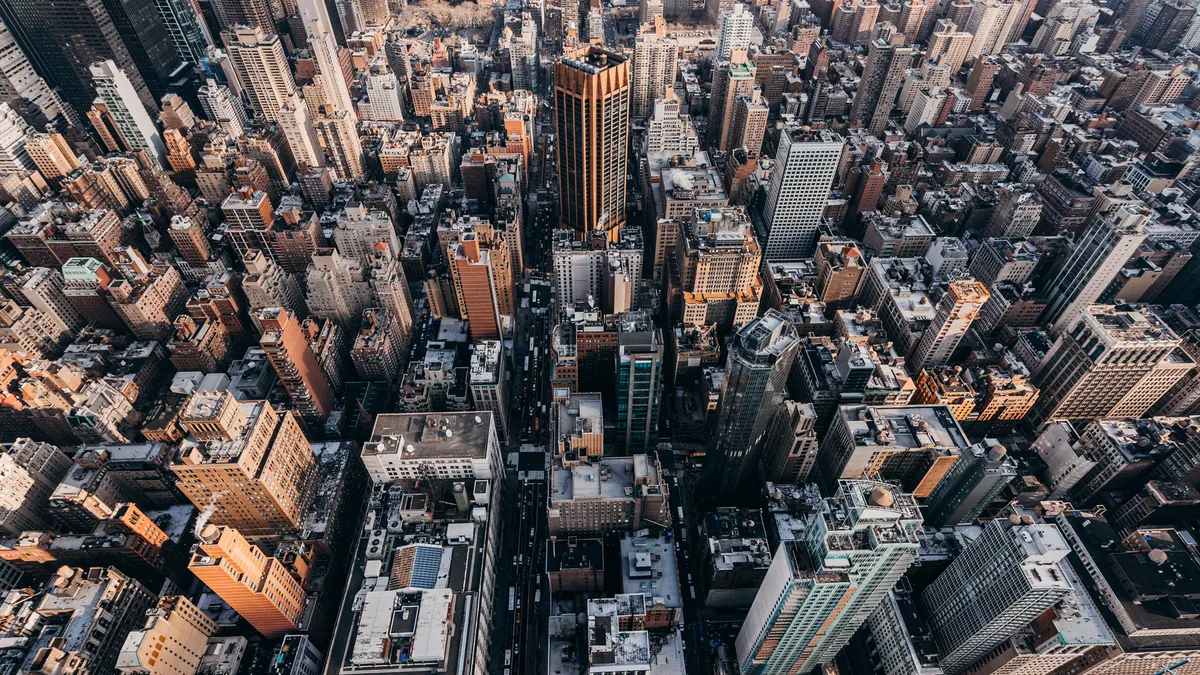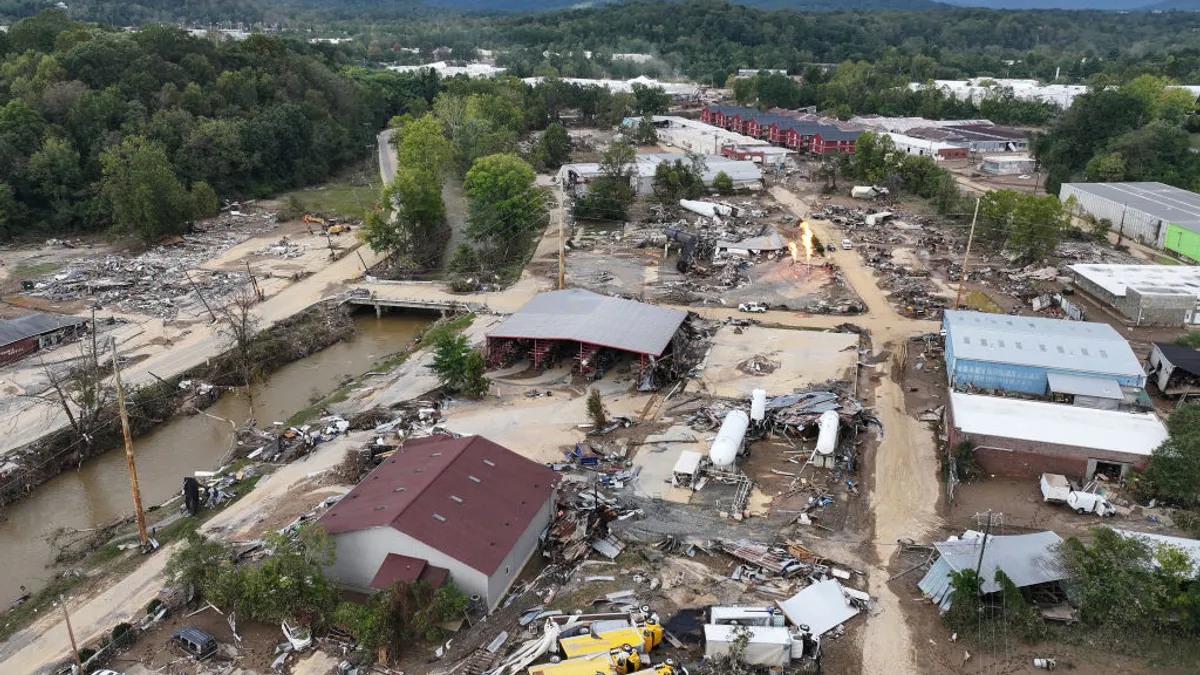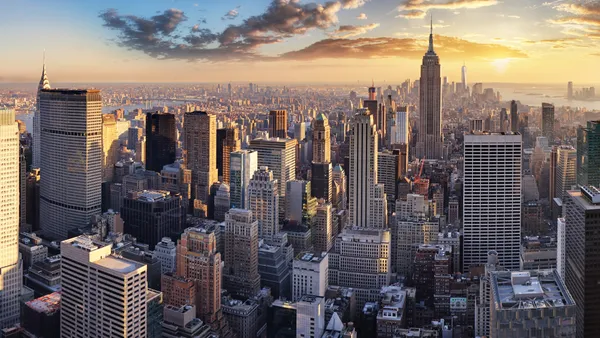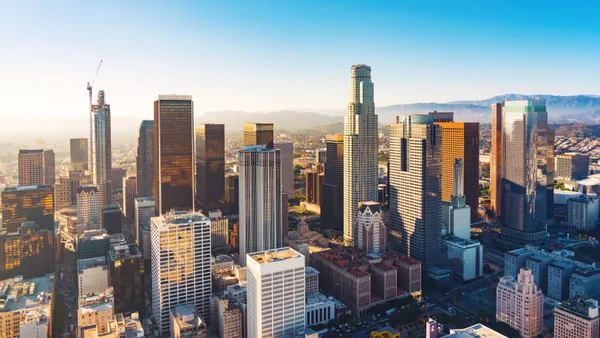Dive Brief:
- The New York City Council on June 20 passed a bill mandating proactive inspections to identify potentially hazardous buildings and structures.
- Int. 0904, the Billingsley Terrace Structural Integrity bill, requires the New York City Department of Buildings to create a risk-based inspection program that can identify dangerous buildings using a model to predict the likelihood of structural failures by assessing factors such as building data, violation history and any prior facade inspection reports.
- Mayor Eric Adams has earmarked $4.7 million for the DOB to implement the inspection program and the bill is now headed to his desk. If approved, it would take effect within 180 days of being signed into law. “This funding allows DOB to hire and train the appropriate personnel to implement and carry out the program in the near future. This will include the hiring of new inspectors, attorneys and analysts,” said David Maggiotto, a spokesperson for the DOB. Maggiotto noted that the DOB will begin the hiring process in the next few months.
Dive Insight:
New York City is home to approximately 1 million structures, including homes, workplaces, museums, community centers, places of worship and iconic landmarks, according to a city government report. Roughly 75% of these buildings were built before 1960, Council Member and Committee on Housing and Buildings Chair Pierina Sanchez, who sponsored the bill, said during a hearing in April.
The city has experienced several building collapses in recent years, including the partial collapse of a Little Italy building’s brick facade this January, which led the DOB to conduct structural assessments of the damaged building and determine that it was no longer safe. The collapse of a parking garage at 57 Ann Street in lower Manhattan last April, which killed the garage manager and injured five other individuals, was listed as one of the incidents inspiring the legislation.
Bill Int. 0904 seeks to address deficiencies in the DOB’s complaints-driven, reactive inspection process — an issue that has surfaced in the city’s aging building stock and recent incidents, including the Billingsley Terrace collapse in the Bronx and the parking garage collapse in lower Manhattan, the city council said in the release.
Oftentimes, the DOB has only been reactive and responded to complaints it has received, a spokesperson for the city council said, adding that the purpose of the bill is to “avoid having situations where they escalate” to a point of seriousness.
“Since its inception, DOB has primarily been a reactive agency, responding to incidents after they occur and investigating complaints after we receive them from the public,” Maggiotto said. “We do already have a Construction Safety & Compliance program for proactive inspections of large construction sites, but this marks the first time we are doing a proactive inspection program for existing buildings.”
The DOB has “cut nearly 500 positions over the last fiscal year through various budget mechanisms,” Sanchez said. She noted that the $4.7 million allocated for this program, as negotiated by the council, represents “a turning of the tide” in terms of easing the process of access to resources the department would require for the inspection program.
The predictive model the DOB is required to use for the proactive inspection program would evaluate factors such as qualified exterior wall inspector certification history, prior maintenance records, the number of 311 complaints filed, permit history, the date of the most recent alteration and other building data, which includes the building’s age, occupancy type and size, ownership type, construction material, the number of floors from the ground level and the number of public-facing exposures, according to a document outlining the bill.
New York City Commissioner of Buildings Jimmy Oddo is required to establish rules to determine when a corrective action plan is needed after a proactive inspection has been conducted or other safety concerns arise, per the release. Owners or their agents must submit a corrective action plan to the DOB within 10 days of being issued a notice of violation for an unsafe condition resulting from an inspection, the bill says.
The corrective action plan, prepared by a registered design professional in good standing, must clearly document each structural defect and include a timeline that details what repair work will be done to make the building safe. The DOB will also need to conduct follow-up inspections to verify the progress of these plans and issue notices of violation for any non-compliance.
Once the DOB conducts an inspection under the risk-based inspection program, building owners can correct any immediately hazardous violations and any bigger or smaller violations within 30 days of being given a notice of violation, per the bill. The commissioner cannot issue any non-emergency work permits to a building with uncorrected violations identified in the inspection program, nor can the commissioner issue more than two waivers per building, the bill says.
The law applies to “any building that is currently under the jurisdiction of the Department of Buildings in New York City,” Maggiotto said.













